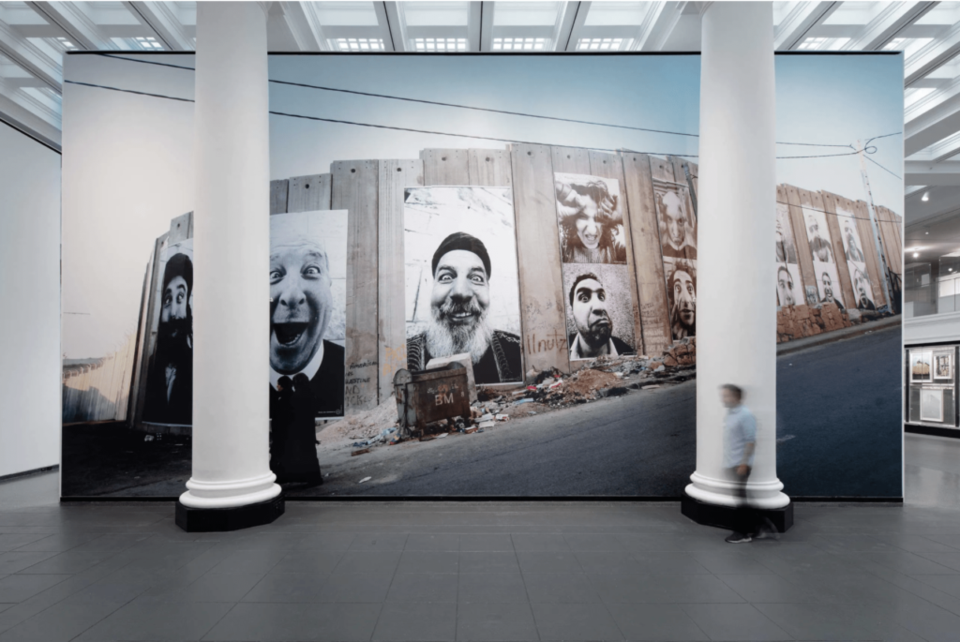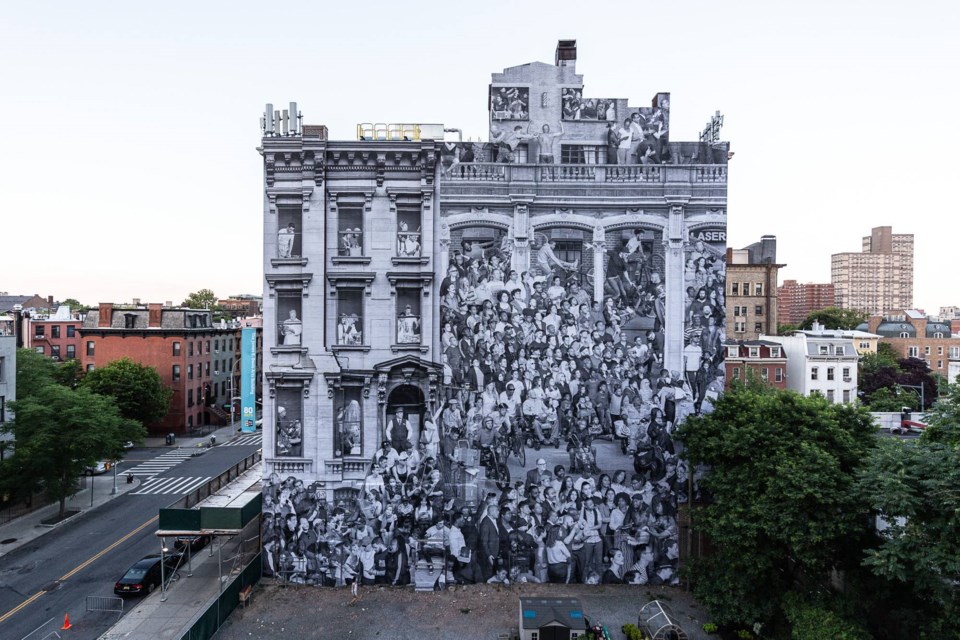The French artist JR, has always created art that celebrates the diverse populations of cities.
Starting out as a teenage graffiti artist, JR's artistry has expanded to large-scale architectural interventions and most recently, collaged murals. JR's career history was the focus of his Brooklyn Museum exhibition "JR: Chronicles", that opened in the fall of 2019.
One of the centerpieces of his exhibition, "The Chronicles of New York City" has found a home on the side of buildings in Brooklyn communities, as COVID-19 shuts down museums.

"The Chronicles of New York City" is a mural featuring over one thousand New Yorkers from all 5 boroughs with audio recordings of each person's story. The series aims to celebrate the diversity of New York City.
Collaborating with other Brooklyn-based organizations, curators Drew Sawyer, Phillip Leonian, and Edith Rosenbaum Leonian Curator of Photography, Brooklyn Museum, and Sharon Matt Atkins, the Director of Exhibitions and Strategic Initiatives were able to bring these murals all across Brooklyn.
There are murals at the Kings Theater in Flatbush, the Brooklyn Academy of Global Finance in Bedford Stuyvesant, and Domino Park in Williamsburg. The most recent mural is installed on the side of a building on 80 Hanson Place in Downtown Brooklyn.
As many New Yorkers have been dealing with social isolation and social distancing guidelines, the mural has become a welcome connecting force to bring New Yorkers together.
"The mural is a detail of The Chronicles of New York City, a large-scale project that JR began in 2018," Drew Saywer, co-curator told BK Reader. "Like so much art, it has taken on new meaning over time, but it continues to be a celebration of the city and its inhabitants."
For the group mural, each individual was asked to share a particular memory they had about the city. The mural is all about telling stories and allowing the participants to have a voice.
"JR's collaborative public projects have always sought to give visibility and voice to individuals and groups within their own communities or cities," Sawyer said. "In recent years, he's developed technologies that have allowed participants to tell their own stories. In this way, they are as much the authors as the subjects of the work.



.png;w=120;h=80;mode=crop)
